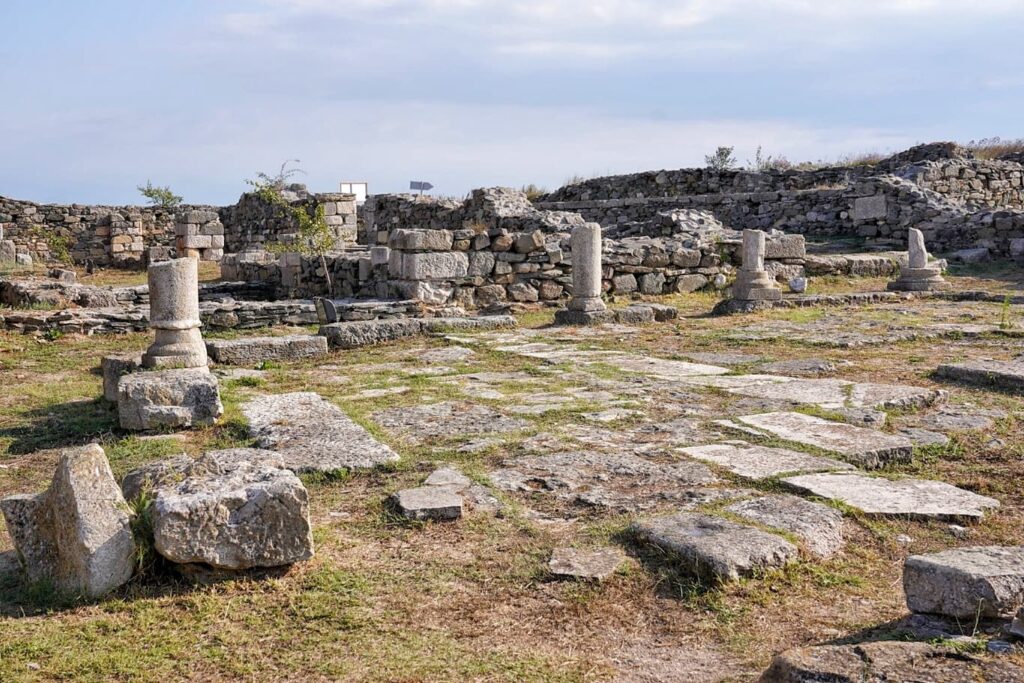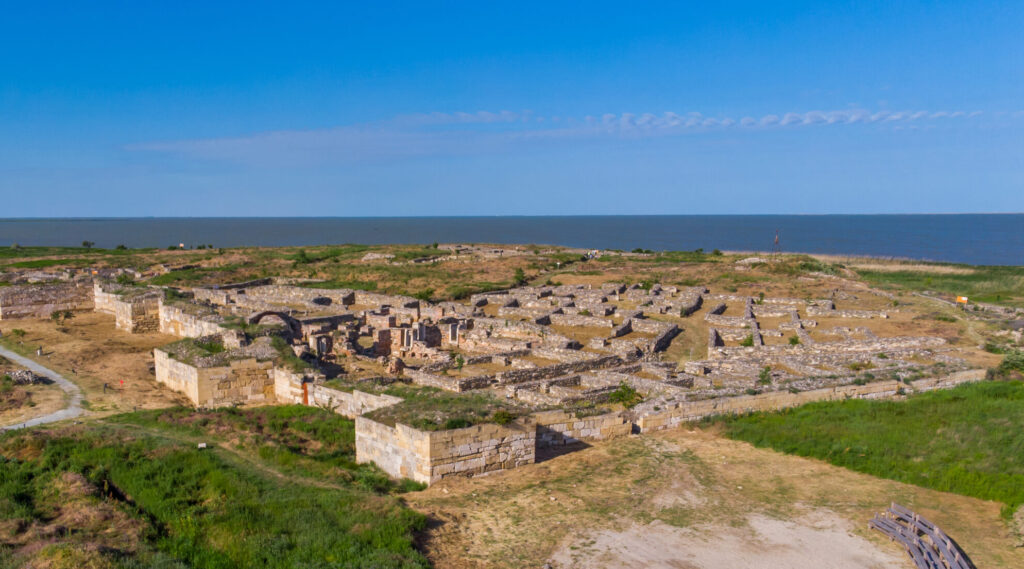Located about 60 km south of Jurilovca, Histria Fortress is the oldest urban settlement on Romanian territory, founded in the 7th century BC by Greek settlers. Its ruins include temples, public baths and defensive walls.
Today, the ruins of the town are located on the administrative territory of Istria commune, in Constanta county.
Histria was founded by Greek colonists from Miletus around 657 BC (according to the historian Eusebius of Caesarea) or 630 BC (according to Skymnos) as a Black Sea port and destroyed by the 7th century AD by the Avar-Slav invasions.

The first coins were minted in Histria in what is now Romania. The coins are cast in silver and bear on the obverse the symbol of the city, an eagle on a dolphin to the left.
The Histria Fortress was identified in 1868 by the French archaeologist Ernest Desjardins, and the actual archaeological research was initiated in 1914 by Vasile Pârvan.

The name Histria (Istria in Greek) comes from the name of the river Istros, as the Danube was called by the Greeks. The settlement was surrounded by a strong defensive wall (only the western part of the fortress wall had 10 towers and two gates), it was supplied with water through pipes over 20 kilometers long, which also supplied the Roman Roman thermal baths, the streets were paved with stone, and it had both physical education (gymnasion) and cultural-artistic (museion) institutions.
You can visit the “Histria” Archaeological Museum where you can find a lot of bas-reliefs, an impressive collection of amphorae and altars more than 2000 years old, even part of the marble facade of the temple dedicated to the “Great God”, the defensive wall of the fortress, with towers and bastions, the ruins of Greek temples very well preserved, some paved streets, dwellings, several Christian basilicas dating from the 6th century AD, the temple of Aphrodite, the temple of Zeus, the forum, the marketplace, the street network and even some sewage pipes.

